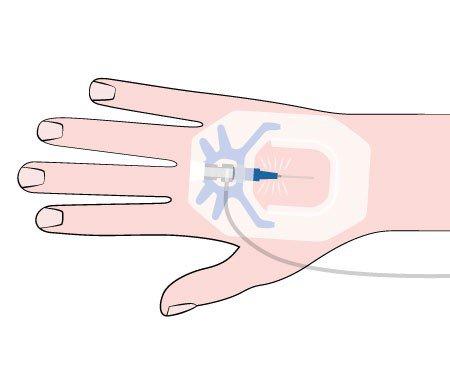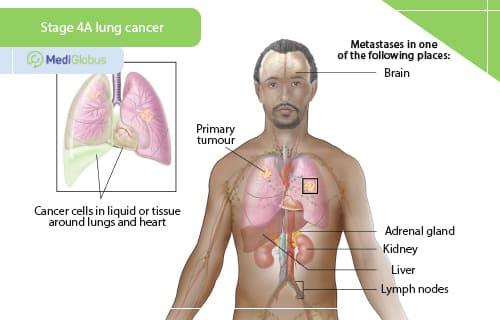Rn Hesi Dosage Calculations Proctored Exam
Total Questions : 32
Showing 10 questions, Sign in for moreThe healthcare provider prescribes amiodarone 0.5 mg/min intravenously (IV) for a client with a ventricular dysrhythmia. The IV bag contains amiodarone 360 mg in dextrose 5% in water (D5W) 200 mL. How many mL/hour should the nurse program the infusion pump?
(Enter numerical value only. If rounding is required, round to the nearest whole number.)
Explanation
To calculate the infusion rate, we need to use the formula:
Infusion rate (mL/h) = Dose (mg/min) x Volume (mL) / Concentration (mg)
Plugging in the given values, we get:
Infusion rate (mL/h) = 0.5 mg/min x 200 mL / 360 mg
Simplifying, we get:
Infusion rate (mL/h) = 100 mL / 360 min
Converting minutes to hours, we get:
Infusion rate (mL/h) = 100 mL / 6 h
Dividing both sides by 6, we get:
Infusion rate (mL/h) = 16.67 mL/h
Rounding to the nearest whole number, we get:
Infusion rate (mL/h) = 17 mL/h
The healthcare provider changes a prescription for nitroglycerin intravenous (IV) infusion from 5 mg/min to 10 mg/min. The IV bag contains nitroglycerin 50 mg in dextrose 5% in water (D5W) 250 mL. The nurse should program the infusion pump to deliver how many mL/h?
(Enter numerical value only. If rounding is required, round to the nearest whole number.)
Explanation
To calculate the infusion rate, we need to use the formula:
Infusion rate (mL/h) = Dose (mg/min) x Volume (mL) / Concentration (mg)
Plugging in the given values, we get:
Infusion rate (mL/h) = 10 mg/min x 250 mL / 50 mg
Simplifying, we get:
Infusion rate (mL/h) = 500 mL / 50 min
Converting minutes to hours, we get:
Infusion rate (mL/h) = 500 mL / 0.83 h
Dividing both sides by 0.83, we get:
Infusion rate (mL/h) = 602.41 mL/h
Rounding to the nearest whole number, we get:
Infusion rate (mL/h) = 602 mL/h

A continuous intravenous (IV) infusion of morphine at 15 mg/hour for pain control is prescribed for a client with end-stage lung cancer. The medication solution minibag is labeled, "50 mg/250 mL." The nurse should program the infusion pump to deliver how many mL/hour?
(Enter numerical value only.)
Explanation
To calculate the infusion rate, we need to use the formula:
Infusion rate (mL/h) = Dose (mg/h) x Volume (mL) / Concentration (mg)
Plugging in the given values, we get:
Infusion rate (mL/h) = 15 mg/h x 250 mL / 50 mg
Simplifying, we get:
Infusion rate (mL/h) = 75 mL / 2 h
Dividing both sides by 2, we get:
Infusion rate (mL/h) = 37.5 mL/h

A client is receiving a secondary intravenous (IV) infusion of azithromycin 500 mg in 500 mL of normal saline (NS) to be infused over 2 hours. The IV administration set delivers 20 gtt/mL. How many gtt/min should the nurse regulate the infusion?
(Enter numerical value only. If rounding is required, round to the nearest whole number.)
Explanation
To calculate the infusion rate, we need to use the formula:
Infusion rate (gtt/min) = Volume (mL) x Drop factor (gtt/mL) / Time (min)
Plugging in the given values, we get:
Infusion rate (gtt/min) = 500 mL x 20 gtt/mL / 120 min
Simplifying, we get:
Infusion rate (gtt/min) = 10000 gtt / 120 min
Dividing both sides by 120, we get:
Infusion rate (gtt/min) = 83.33 gtt/min
Rounding to the nearest whole number, we get:
Infusion rate (gtt/min) = 83 gtt/min
The healthcare provider prescribes oseltamivir for a client who weighs 35 pounds. Recommended dosages for oseltamivir are:
- 30 mg twice a day (BID) for 5 days for a client who weighs less than 33 pounds
- 45 mg BID for 5 days for a client who weighs 34 to 50.6 pounds
- 60 mg BID for 5 days for a client who weighs 51 to 88 pounds
- 75 mg BID for 5 days for a client who weighs more than 88 pounds
Oseltamivir is labeled, "12 mg/mL suspension." How many milliliters should the nurse administer per dose? (Enter the numerical value only. If rounding is required, round to the nearest tenth.)
Explanation
To calculate the volume of oseltamivir suspension, we need to use the formula:
Volume (mL) = Dose (mg) / Concentration (mg/mL)
Since the client weighs 35 pounds, which is between 34 and 50.6 pounds, the recommended dose is 45 mg BID for 5 days. Plugging in this value and the concentration of oseltamivir suspension, we get:
Volume (mL) = 45 mg / 12 mg/mL
Simplifying, we get:
Volume (mL) = 3.75 mL
Rounding to the nearest tenth, we get:
Volume (mL) = 3.8 mL
A client with angina pectoris is receiving intravenous (IV) nitroglycerin 50 mg/250 mL of D5W to be infused over 24 hours via pump. How many mL/hour should the nurse program the infusion pump?
(Enter numerical value only. If rounding is required, round to the nearest whole number.)
Explanation
To calculate the infusion rate, we need to use the formula:
Infusion rate (mL/h) = Volume (mL) / Time (h)
Plugging in the given values, we get:
Infusion rate (mL/h) = 250 mL / 24 h
Simplifying, we get:
Infusion rate (mL/h) = 10.42 mL/h
Rounding to the nearest whole number, we get:
Infusion rate (mL/h) = 10 mL/h
The healthcare provider prescribes interferon beta-1b 0.1875 mg every other day for a client with multiple sclerosis. The nurse receives a vial of powder labeled, "0.3 mg with 1.2 mL of sterile water." How many mL should the nurse administer to the client?
(Enter the numerical value only. If rounding is required, round to the nearest hundredth.)
Explanation
To calculate the volume of interferon beta-1b solution, we need to use the formula:
Volume (mL) = Dose (mg) x Dilution factor (mL/mg)
The dilution factor is the ratio of the volume of sterile water to the amount of powder in the vial. In this case, it is 1.2 mL / 0.3 mg.
Plugging in the given values, we get:
Volume (mL) = 0.1875 mg x 1.2 mL / 0.3 mg
Simplifying, we get:
Volume (mL) = 0.75 mL
The healthcare provider prescribes dopamine 2 mcg/kg/min intravenously (IV) for a client who weighs 132 pounds. The IV bag contains dopamine 45 mg in dextrose 5% in water (D5W) 500 mL. The nurse should program the infusion pump to deliver how many mL/hour?
(Enter numerical value only. If rounding is required, round to the nearest whole number.)
Explanation
First, we need to convert the patient’s weight from pounds to kilograms, since the dose is in mcg/kg/min. To do this, we use the metric equivalent that 1 kg = 2.2 lbs. So, we divide 132 by 2.2 and get 60 kg.
Next, we need to calculate the dose of dopamine in mcg/min for this patient. To do this, we multiply the ordered dose (2 mcg/kg/min) by the patient’s weight (60 kg). So, we get 2 x 60 = 120 mcg/min.
Then, we need to convert the dose of dopamine from mcg/min to mg/hour, since the IV bag contains dopamine in mg. To do this, we use the fact that 1 mg = 1000 mcg and 1 hour = 60 minutes. So, we divide 120 by 1000 and multiply by 60. So, we get 120 / 1000 x 60 = 7.2 mg/hour.
Finally, we need to calculate the infusion rate in mL/hour for this IV bag. To do this, we use the ratio of dopamine in mg to D5W in mL, which is 45 mg / 500 mL. So, we set up a proportion as follows:
45/500=7.2/x
To solve for x, we cross-multiply and get 45 x = 3600. Then, we divide both sides by 45 and get x = 80. So, the infusion rate is 80 mL/hour.
Therefore, the nurse should program the infusion pump to deliver 80 mL/hour. (If rounding is required, round to the nearest whole number.)
The healthcare provider prescribes hydromorphone 1 mg intravenously (IV) every 3 hours for an older client after hip replacement surgery. The nurse prepares the prescribed dose from an ampule labeled, "Hydromorphone Injection 2 mg/mL." Additional instructions for opiate naive clients recommend diluting the dosage with 3 mL of sterile normal saline (NS) for IV push over 2 to 3 minutes. How many mL is the total volume of diluted medication?
(Enter the numerical value only. If rounding is required, round to the nearest tenth.)
Explanation
To calculate the total volume of diluted medication, we need to use the formula:
Total volume (mL) = Drug volume (mL) + Diluent volume (mL)
First, we need to calculate the drug volume by dividing the dose by the concentration. In this case, 1 mg of hydromorphone is equivalent to 0.5 mL of hydromorphone injection.
Plugging in the given values, we get:
Total volume (mL) = 0.5 mL + 3 mL
Simplifying, we get:
Total volume (mL) = 3.5 mL
The healthcare provider prescribes dopamine 2 mcg/kg/min intravenously (IV) for a client who weighs 132 pounds. The IV bag contains dopamine 45 mg in dextrose 5% in water (D5W) 500 mL. The nurse should program the infusion pump to deliver how many mL/hour?
(Enter numerical value only. If rounding is required, round to the nearest whole number.)
Explanation
To calculate the infusion rate, we need to use the formula:
Infusion rate (mL/h) = Dose (mcg/min) x Weight (kg) x Volume (mL) / Concentration (mcg)
First, we need to convert the weight from pounds to kilograms by multiplying by 0.454. In this case, 132 pounds is equivalent to 59.928 kg.
Plugging in the given values, we get:
Infusion rate (mL/h) = 2 mcg/min x 59.928 kg x 500 mL / 45000 mcg
Simplifying, we get:
Infusion rate (mL/h) = 132.84 mL/h
Rounding to the nearest whole number, we get:
Infusion rate (mL/h) = 133 mL/h
Sign Up or Login to view all the 32 Questions on this Exam
Join over 100,000+ nursing students using Naxlex’s science-backend flashcards, practice tests and expert solutions to improve their grades and reach their goals.
Sign Up Now


